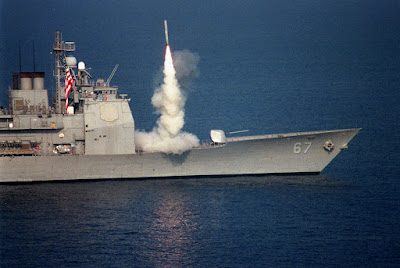Battleships and Gun Cruisers of the Major Cold War Navies

Cannon were first used at sea sometime in the 15th century. While various siege engines had been employed by navies for thousands of years, they never had a profound effect on war at sea. Instead, naval combat was dominated by ramming and boarding actions. While these ancient tactics remain in use today, guns fundamentally transformed naval warfare as they allowed a ship to disable or even sink its enemies from a distance. Guns developed over time from the small manually aimed muzzle loaders of the early days to the massive computer controlled weapons of the World Wars. Range, rate of fire, throw weight, and accuracy all made tremendous strides but the basic principals remained the same for the five centuries when guns dominated naval combat. The 19th century saw this dominance shaken by the introduction of various forms of mines and torpedoes, but it was not until the introduction of aircraft in the 20th century that the gun was finally replaced as the primary naval weapon. Althou...



